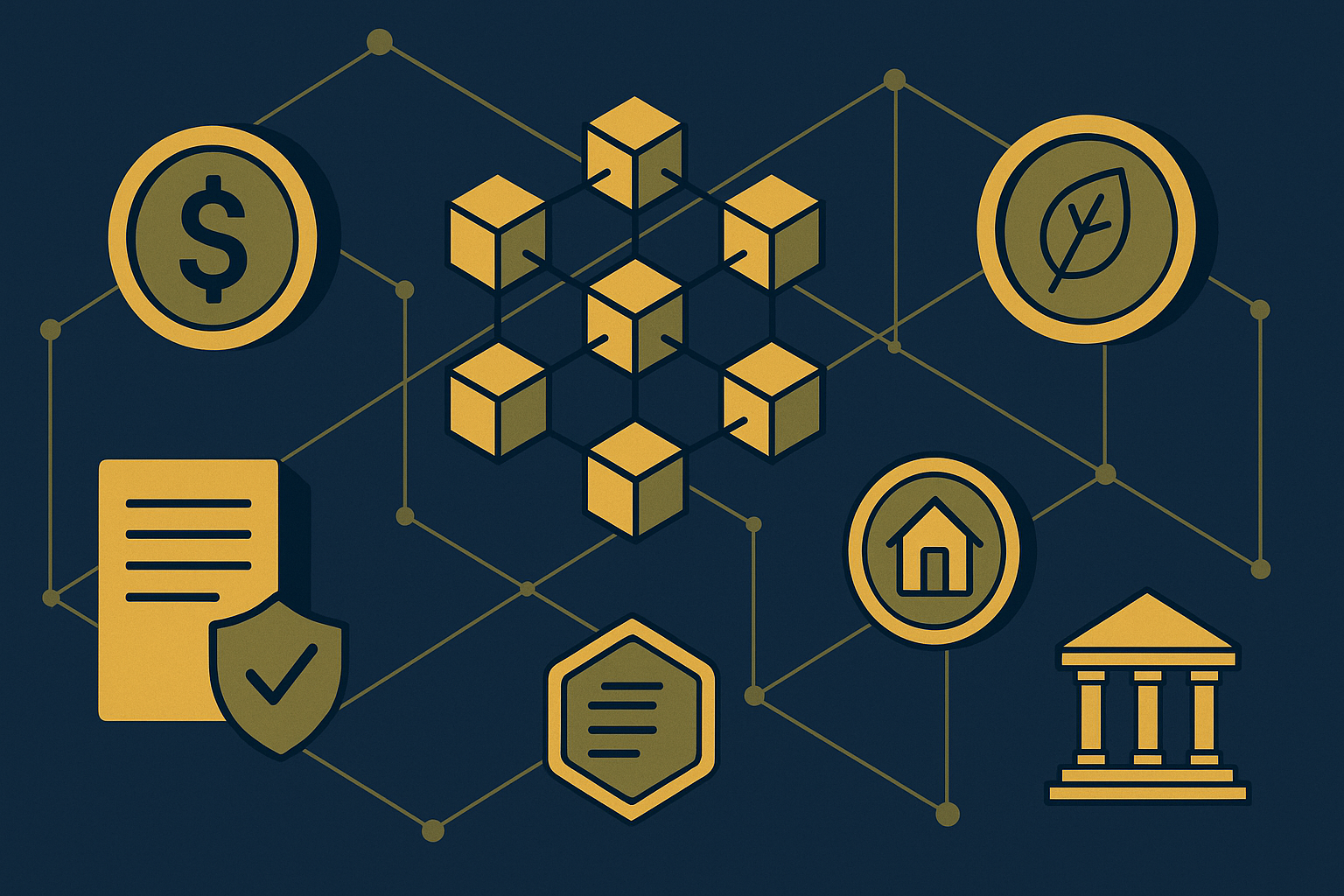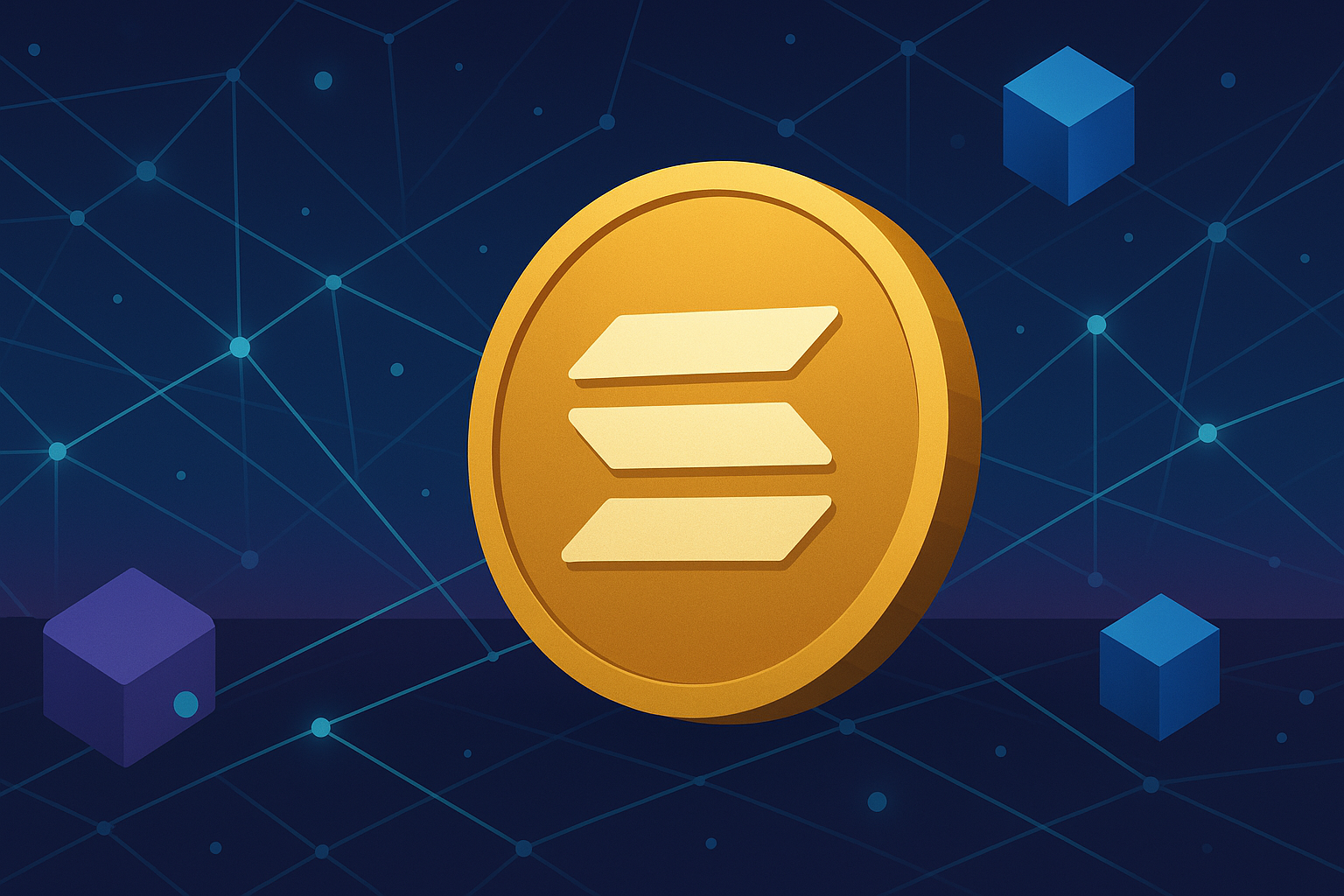
Tokenizing real-world assets (RWAs) converting ownership or cash-flows from physical or off-chain financial instruments into on-chain tokens — has moved from pilots to meaningful scale. Over the last two years the on-chain RWA landscape saw explosive growth as institutional capital and incumbents experiment with tokenized treasuries, funds and property. Marketing agencies that specialise in RWAs are not just “crypto PR” shops; they are specialist go-to-market teams that combine finance, compliance, product design and developer enablement to make tokenized assets investable, liquid and trusted for traditional and crypto investors alike. This article explains why RWA marketing is different, what a best-in-class RWA agency does, real-world examples and metrics to track, and how projects should prioritise messaging, channels and risk-mitigation to accelerate adoption.
Why RWA tokenization needs specialised marketing
Tokenized RWAs blur two worlds: the rules, trust assumptions and buyer expectations of traditional finance (legal contracts, KYC/AML, custodians, audit trails) and the mechanics and culture of blockchain finance (smart contracts, wallets, on-chain liquidity). That combination creates three immediate marketing challenges:
Trust is not automatic. Institutional and retail buyers expect legal enforceability, custody and service levels. Marketing must foreground legal wrappers, audits, third-party custody and operational processes — not hype. Recent industry trackers show rapid growth in tokenized asset value but also highlight concentrated holdings and comparatively small secondary liquidity, underscoring how credibility matters.
Audiences are heterogenous. You must speak to CFOs, fund managers and treasurers (who care about counterparty risk and compliance), as well as DeFi LPs and retail crypto investors (who care about yield and composability). One message does not fit all.
Regulatory complexity. Tokenised securities and funds sit at the intersection of securities, payments and custody regimes — marketing must be legally precise and avoid claims that could attract regulatory scrutiny. Reuters and legal advisories emphasise that banks and incumbents are progressing cautiously due to regulatory and market-structure limitations.
Because of this, the RWA marketing agency is part financial adviser, part product marketer, part legal translator and part developer evangelist. The rest of the article outlines what those roles mean in practice.
The market context: scale, entrants and why adoption matters
Understanding the market picture helps prioritise the agency’s activities. Public trackers and industry reporting show that tokenized RWA value has ballooned in 2024–2025, driven by tokenized treasuries, institutional pilot funds, and real-estate fractionalisation. Industry trackers reported the total tokenized RWA market in the tens of billions of dollars in 2025, with month-to-month growth and accelerating issuer counts; specialised analytics platforms report the on-chain RWA value and metrics (holders, issuers, TVL) in near real-time.
Major institutional names have also entered the space, signalling strategic interest: BlackRock’s tokenized treasury fund and partnerships between asset managers and tokenisation platforms have drawn headlines and liquidity to the segment, while banks are piloting tokenized products in more controlled, institutional environments. These moves boost credibility while also shifting product design and go-to-market expectations toward institutional workflows (compliance, custodian integrations, KYC).
At the same time, specialist infrastructure projects (for example Centrifuge’s Tinlake pools for pooled real-world receivables and DeFi integrations) and tokenized real-estate platforms (like RealT) demonstrate both the promise and the pitfalls of on-chain RWAs — success stories that generated investor access and liquidity, and operational missteps that highlighted tenant-services, governance and reputational risks. These case studies guide what real-world marketing must emphasise: transparency, durable servicing and impeccable documentation.
What a top-tier RWA marketing agency does (services and outcomes)
A specialist RWA agency aligns marketing outcomes with financial and compliance goals. Core services include:
1. Product positioning and investor segmentation
Treat the token like a financial product. The agency defines: who the token is for (institutional qualified purchasers, accredited investors, crypto LPs, retail), the risk profile and the distribution pathway. Messaging must translate yield/return profiles, covenants, servicing waterfall and exit mechanisms into language each investor type understands. For institutions, the narrative prioritises counterparty, custody, and legal enforceability; for crypto audiences, composability and yield matter more.
2. Compliance-first messaging & legal translation
Agencies coordinate with counsel to craft market-facing statements that accurately reflect legal wrappers, transfer restrictions, and AML/KYC processes. From “how the security is represented on-chain” to “who holds the legal title off-chain,” every public document must reduce legal uncertainty rather than inflate promises. Firms that mishandle this can attract enforcement risk and permanently damage adoption prospects. (See legal frameworks and guidance from law firms and policy groups.)
3. Institutional biz-dev & partnerships
An RWA marketing agency builds lines into custodians, prime brokers, fund platforms and regulated marketplaces. Converting large-ticket institutional allocations often depends on pro-forma legal documents, custodian MOUs, and pilot commitments before public marketing can scale. The agency typically runs closed investor roadshows, prepares PPM-style materials, and orchestrates pilot program reporting.
4. Developer enablement & integrator docs
For RWAs that will be used as DeFi collateral or listed on DEXs, developer docs, SDKs, oracle details and sample integrations are required. The marketing agency produces technical collateral and sample integrations so asset managers and DeFi teams can evaluate composability and risk engineering — a critical step for on-chain adoption. (Projects like Centrifuge emphasise Tinlake pools and technical integration as a cornerstone of adoption.)
5. Data and transparency tooling
Agencies design investor dashboards and reporting templates that surface on-chain and off-chain KPIs (delinquency rates, servicing events, token holder distribution, reserves). Visibility into real operations is a powerful adoption accelerator: investors buy what they can monitor and audit.
6. Reputation, crisis and tenant-operations PR
Tokenized real-estate or asset managers expose projects to real operational issues. An agency that can coordinate legal, ops and communications to handle defaults, tenant problems, or audit findings quickly protects investor confidence. The RealT experience shows reputational exposure is real and costly when operational execution is weak.
Channel playbook: where to reach each audience
A differentiated channel strategy increases adoption efficiency. Below are specialised channels and how agencies use them.
Institutional channels
Private roadshows and institutional webinars. Closed sessions with custodians, family offices and asset managers where legal/ops teams present the documentation and answer diligence questions.
Trade press & research partnerships. Thought leadership in financial media (FT, Bloomberg, leading asset management outlets) and customized research for investor audiences. Public endorsements are rarer; long, evidence-based whitepapers work better.
Custodian & prime-broker collaborations. Co-branded materials with a custodian demonstrate custody arrangements and settlement flows, which often unlock institutional allocations.
Crypto/DeFi channels
Developer AMAs, technical deep dives and hackathons. Demonstrate composability and integrate with lending protocols.
Liquidity mining and market-making pilots. Bootstrap secondary markets while managing regulatory boundaries.
DeFi analytics and on-chain dashboards. Provide metrics that DeFi LPs care about (utilisation, yield sustainability).
Retail channels (where appropriate)
Educational series. Tokenized RWAs are complex; agencies invest in long-form explainers and webinars that demystify custody, legal ownership and tax implications.
Localized onboarding. For tokenized real-estate, localized compliance and payment rails are necessary to convert non-crypto retail audiences.
In short: match channels to investor due-diligence timelines. Institutions need closed-door trust-building; DeFi audiences need technical proofs.
Messaging & content: what actually converts
High-impact content for RWA adoption is not marketing speak — it’s rigorous evidence. Examples:
Operational due-diligence memos. Detailed, downloadable documents covering servicing agreements, insurance, reserve accounts, legal title and waterfall mechanics.
Audit and attestation reports. Smart contract audits are necessary but not sufficient; off-chain attestation from reputable auditors or custodians on asset existence and servicing is decisive.
Performance case studies with verifiable metrics. Historic cash flow performance, delinquency statistics and on-chain proof points convert best.
Interactive investor dashboards. Live on-chain links, oracle feeds and off-chain reconciliations build confidence.
Legal Q&A and jurisdictional playbooks. Answers to “If the issuer defaults, how does on-chain lien translate to off-chain remedies?” are demanded by counsel and compliance teams.
Agencies should position these materials as the product that helps buyers do diligence faster. The faster and more complete the diligence, the shorter the sales cycle.
Tech & trust: how marketing supports product engineering
Marketing must be intertwined with engineering and operations. Three concrete integrations matter:
Oracle and price-feed transparency. Agencies explain how valuation and oracle feeds work, how often prices are updated and fallback procedures (critical for collateralised use cases such as MakerDAO’s RWA initiatives). Projects that document oracle governance reduce perceived counterparty risk.
Audit & insurance signaling. Marketing highlights audit results, insurance caps, and credit enhancements (reserves, overcollateralization). These are often the deciding factors for treasury and corporate allocators.
Servicer and waterfall clarity. For assets like mortgages or rental property, servicers, default procedures and cash-distribution rules must be described plainly and documented — marketing builds the narrative and the visualizations that legal teams read first.
Centrifuge’s work in building infrastructure for pooled receivables and integrating with DeFi lending protocols is a useful example of how technology and market education together unlock investor interest.
Case studies: successes and lessons
RealT — fractionalizing rental income
RealT pioneered tokenized rental income by creating digital tokens that represent fractional property ownership and distribute rent on-chain. This lowered entry barriers and attracted thousands of small investors. However, operational challenges (tenant management, local maintenance and taxes) later surfaced and required remedial operational and communications work — a reminder that tokenization does not remove the need for high-quality off-chain asset management. Marketing that ignores operations will quickly lose credibility.
Centrifuge & Tinlake — structuring pooled receivables
Centrifuge built tokenable pools (Tinlake) that enable originators to bring invoices, receivables and loans on-chain and access liquidity from DeFi and institutional investors. Their model emphasises risk-rating, documentation and integration with DeFi primitives and marketing focused on demonstrable pool performance and transparent servicing to earn trust from DeFi LPs and protocols. The result was substantial growth and institutional partnerships.
BlackRock & tokenized treasury funds
The entry of major asset managers into tokenized treasuries (for example BlackRock’s early tokenized treasury offerings via Securitize partnerships) provided a signal boost to RWA tokenization by illustrating how incumbent distribution and custody channels can be blended with tokenized delivery. These use cases often target institutional liquidity and operate in permissioned frameworks; marketing for these products leans on incumbent channel relationships and detailed compliance disclosures.
KPIs that matter for adoption
Trackable, finance-grade KPIs separate marketing noise from progress:
Total on-chain asset value and TVL (tracked via industry dashboards).
Number of asset issuers and unique token holders (indicates distribution breadth).
Secondary market liquidity (volume and spread) — a leading indicator of investor confidence.
Institutional commitments / pilot allocations (dollars under contract, not marketing claims).
Diligence cycle time — time for an institutional investor to complete legal and operations due diligence; reductions indicate stronger product-market fit.
Operational metrics (delinquency rates, reserve utilization, servicer response times) — these drive investor renewals.
Cost of capital — yield demanded by investors in successive issuances; an improving cost of capital signals trust.
Agencies should build dashboards that map marketing activity to these outcome KPIs rather than vanity metrics.
Regulatory posture and risk mitigation (what marketing must never gloss over)
Regulation is central to RWA success. Marketing must:
Avoid making promises about liquidity or guaranteed returns unless fully backed by legal documents.
Clearly articulate transfer restrictions, accredited investor status requirements and tax consequences.
Explain jurisdictional custody arrangements and cross-border restrictions. Law firms and policy papers outline frameworks and recommended disclosures; agencies must coordinate closely with counsel.
Regulatory caution is not a reason to avoid marketing; it’s a reason to make marketing more rigorous and evidence-based. Reuters coverage of banks’ cautious trajectories in tokenization demonstrates that constrained but credible pilots are the likely path to scale.
Pricing, engagement models and what to expect from an agency
Engagements typically fall into three buckets:
Go-to-market build (short-term, high intensity). Product positioning, investor materials, pilot roadshows and PR for launch.
Ongoing investor relations & content (retainer). Dashboards, reporting, regular legal updates and roadshows for subsequent issuance cycles.
Ecosystem & developer enablement. Technical docs, integrations, hackathons and liquidity programs targeted at DeFi integrators.
Fees vary by scope; high-touch institutional GTM and legal coordination make RWA marketing more expensive than typical consumer crypto campaigns. Expect cross-functional teams (legal liaison, ex-bank salespeople, tokenomics lead, developer evangelist and PR) to be part of the engagement.
The future: where marketing can unlock the most value
Three trends will shape the next five years and require marketing leadership:
Institutional bridges & permissioned on-ramps. As custodians and asset managers launch tokenized products, marketing will pivot toward integrated channel plays that blend traditional sales motion with on-chain proofs. Examples from tokenized treasury funds show how incumbent distribution can accelerate adoption if communication clearly maps to institutional workflows.
Standardisation of disclosures and auditability. If industry groups and regulators converge on standard investor disclosures, marketing can shift from bespoke diligence packages to standard, repeatable narratives — reducing cycle times and marketing costs. The World Economic Forum and legal advisories have been working on frameworks to make this possible.
Hybrid liquidity models. Permissioned primary issuance plus open secondary markets (or controlled on-chain liquidity protocols) will become more common. Marketing must explain these hybrid flows so buyers understand when and how they can exit positions.
Market research projections point to very large long-term opportunity sizes for asset tokenization broadly; credible growth will be uneven and sector-specific. Agencies that build evidence, manage operational risk and partner with incumbents will be at the front of this wave.
Recommendations for projects evaluating an RWA marketing agency
Demand cross-functional teams. Your agency should include legal and custody contacts, not only PR people.
Require deliverables that map to diligence. Insist on investor memos, servicer documentation, audit schedules and custody MOUs as part of the contract.
Pilot first, scale later. Run a limited pilot with a small institutional audience to validate legal mechanics and operations before broad retail pushes. Evidence from bank pilots shows cautious, measured rollouts perform better.
Measure real outcomes. Link agency KPIs to diligence cycle time, pilot commitments and secondary market liquidity — not impressions.
Plan for reputational contingencies. Include crisis playbooks and service-recovery plans in vendor agreements, especially for real-estate or consumer-facing assets.
Conclusion
Real-world asset tokenization is no longer purely academic: the market has real scale, major incumbents are testing tokenized instruments, and infrastructure projects have demonstrated production-grade capabilities. But tokenization trades complexity for opportunity — credibility, custody and legal clarity matter more than ever. A specialist RWA marketing agency is the bridge between product engineering, legal compliance and investor adoption: it translates legal and operational rigor into clear, evidence-based narratives, builds institutional distribution and supports developer adoption where appropriate. For teams building tokenized assets, the right agency does more than get headlines — it reduces due-diligence friction, protects reputation and drives measurable flows of capital to sustainable products.









Write a comment ...